aquagenetics
Member
Hey all,
So on alot of yours advice i started now since recently with EI dosing (1 week), i ordered it from a dutch website, that also gave you a recipe on how to make the 2 ferts (Macro and Micro)
however i tested the water and the parameters seem quite low ? (is this because of my plants uptake ?)
i am using Tropica aquasoil.
on this site they also told me to dose alternatively so Macro 40ml, and then next day micro 60ml, and also 2 rest days (i didnt follow this because water parameters were low.)
- Water parameters - (Yes i know test kits suck but wanted to give a little bit of more info.)
po4 0,5 (i think this has to be like in the 2 range)
Nitrate 5-10 (should also be higher i think ? )
Ammonia 0,0 mg/l (So thats not leaking from the aquasoil)
The recipe they gave me is :
(Macro)
432ML osmosis water (i used boiled tap water and let that cool down a bit)
35,24 gr KNO3
2,76 gr KH2PO4
16,04 gr K2SO4
Lights im using is : 2x juwel helialux spectrum 8 hours of light. (with rampup)
RED 100 %
Green : 100%
Blue : 80%
White : 100%
Maybe to much light ?
i thought this was possible, if you inject enough co2 / nutrients.
- CO2 -
JBL PROFLORA inline diffusor.
Filtration : JBL CRISTALPROFI E1500
(Micro)
432ML osmosis water (i used boiled tap water and let that cool down a bit)
10 gr tenso cocktail (Trace elements) more info what it contains here : Sporenelementen (Tenso cocktail)
Pictures of my aquarium : and also the algae issues.
Rotala waliichii looks great, but the algae is between it i dont know what this is.
same with the pogostemon stellatus erectus, and the bucephalandra totally covered with it.
All tips / Help is welcome thanks alot! i want this aquarium to be a success
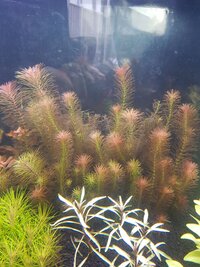
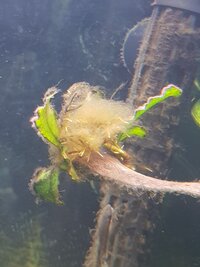
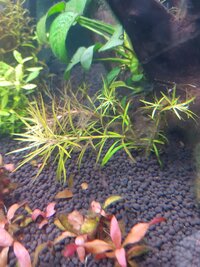
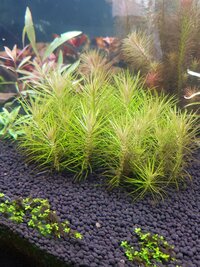
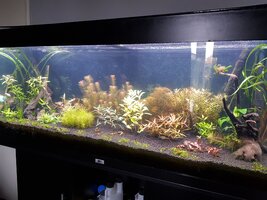
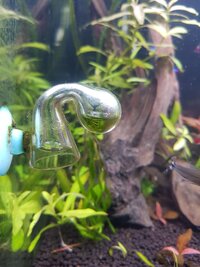
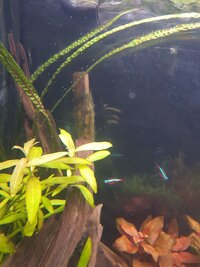
So on alot of yours advice i started now since recently with EI dosing (1 week), i ordered it from a dutch website, that also gave you a recipe on how to make the 2 ferts (Macro and Micro)
however i tested the water and the parameters seem quite low ? (is this because of my plants uptake ?)
i am using Tropica aquasoil.
on this site they also told me to dose alternatively so Macro 40ml, and then next day micro 60ml, and also 2 rest days (i didnt follow this because water parameters were low.)
- Water parameters - (Yes i know test kits suck but wanted to give a little bit of more info.)
po4 0,5 (i think this has to be like in the 2 range)
Nitrate 5-10 (should also be higher i think ? )
Ammonia 0,0 mg/l (So thats not leaking from the aquasoil)
The recipe they gave me is :
(Macro)
432ML osmosis water (i used boiled tap water and let that cool down a bit)
35,24 gr KNO3
2,76 gr KH2PO4
16,04 gr K2SO4
Lights im using is : 2x juwel helialux spectrum 8 hours of light. (with rampup)
RED 100 %
Green : 100%
Blue : 80%
White : 100%
Maybe to much light ?
i thought this was possible, if you inject enough co2 / nutrients.
- CO2 -
JBL PROFLORA inline diffusor.
Filtration : JBL CRISTALPROFI E1500
(Micro)
432ML osmosis water (i used boiled tap water and let that cool down a bit)
10 gr tenso cocktail (Trace elements) more info what it contains here : Sporenelementen (Tenso cocktail)
Pictures of my aquarium : and also the algae issues.
Rotala waliichii looks great, but the algae is between it i dont know what this is.
same with the pogostemon stellatus erectus, and the bucephalandra totally covered with it.
All tips / Help is welcome thanks alot! i want this aquarium to be a success










